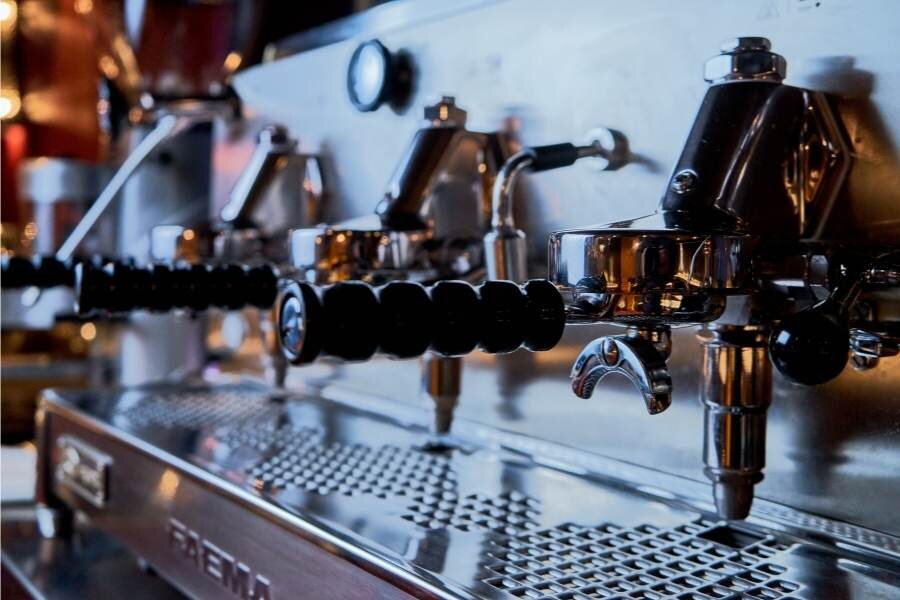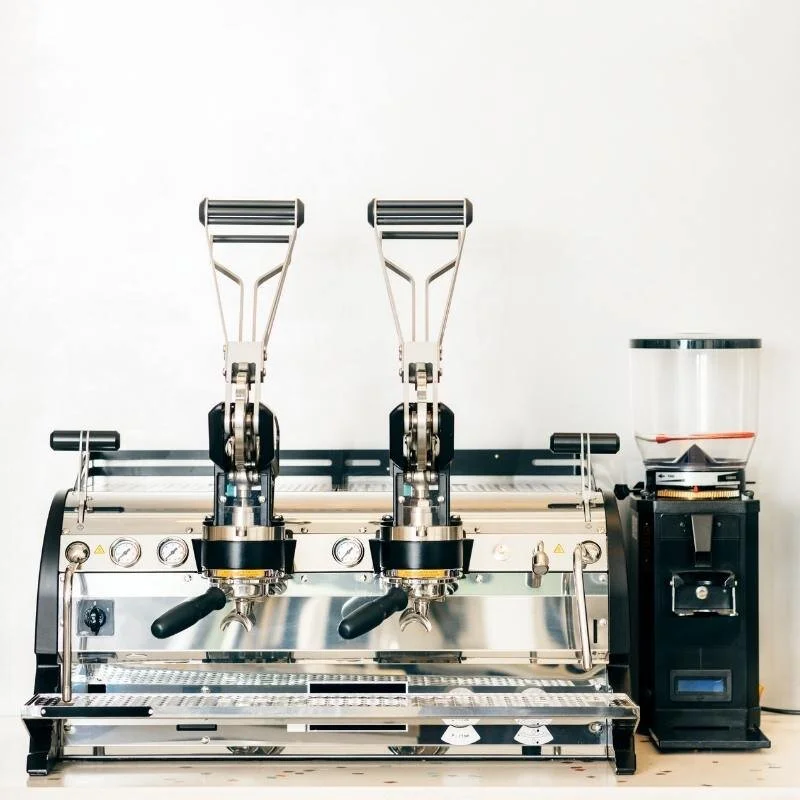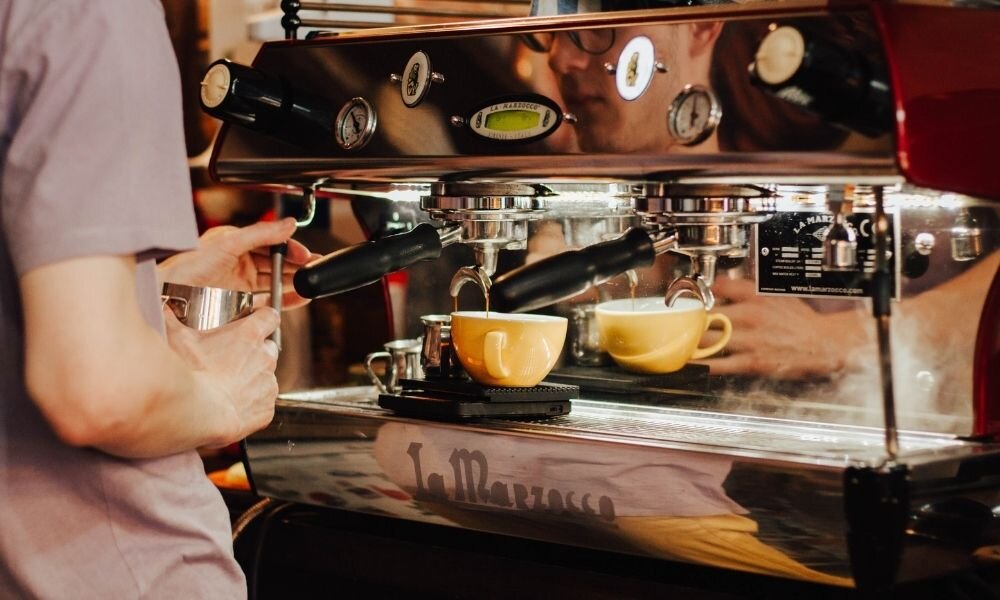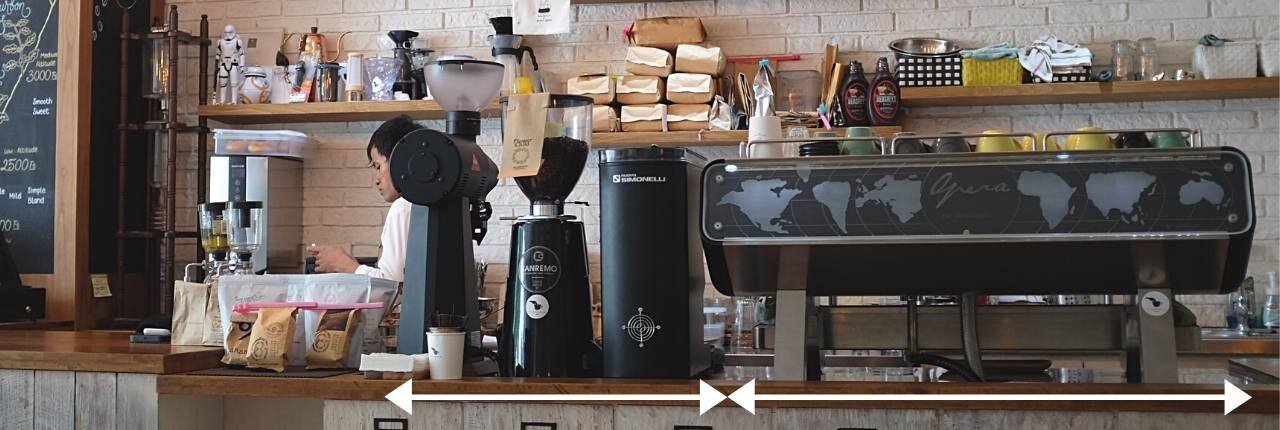Commercial Coffee Machines UK | Ultimate Guide
After spending years working behind the bars of countless cafe’s and coffee shops
In the UK and Australia (even for a short time in Peru) I have had experience in using a fair few commercial coffee machines.
It doesn’t matter whether you have just bought a coffee van and you’re looking to hook up a 1 group professional espresso machine to serve a few people at the weekend.
Or whether you have an established cafe already and you’re looking to upgrade your machine to a larger capacity or higher quality of espresso there is most definitely a coffee machine out there for you.
So without further hesitation, let’s dive into commercial coffee machines.
Why Trust Me?
Need Coffee For Your Commercial Coffee Machine?
Batch Coffee Club is a unique way of showcasing world class coffee to your customers.
Cutting to straight to our USP, we offer:
A different single origin coffee every week, from independent UK roasters.
Batch seasonal espresso blend.
Single origin decaf coffee.
Please fill out the form via the link below and we will get back to you with a quote.
How Commercial Coffee Machines Work?
Water is pumped into the espresso machine either from a connected water source or a water tank.
Photo: Clive Coffee
The water will then hit the boilers (most professional coffee machines will have two boilers, one for espresso and one for the steam wand).
Water is heated through the element at a controlled rate that is managed in some machines by a proportional integral derivative (PID). This ensures the water is always at the optimal temperature.
The portafilter is locked in place with the tamped puck of espresso (check out our guide on the best coffee tampers).
Water heated to the optimum temperature (around 91C - 95C) is then pumped through the showerhead at 9 bars of pressure onto the bed of coffee and hopefully extracting the perfect espresso.
8 Factors To Keep In Mind When Purchasing a Commercial Coffee Machine.
1. Type of Commercial Coffee Machine
‘Semi Auto vs Auto vs Super Automatic vs Lever (manual)’
Semi-Automatic commercial coffee machine
Many of the industry coffee machines you will see in cafes are semi-automatic or at least have semi-automatic functionality.
Here, you press a button to start the extraction and decide when to stop the shot by pressing the button again. You grind the beans, tamp and steam the milk.
Semi Automatic Espresso Machine
Automatic commercial coffee machine
Also very common in cafes and will almost certainly have a semi-automatic option.
You will grind and tamp the coffee as normal but this time press a preprogrammed button that measures out the desired amount of water and stops the shot automatically. You will still have to steam the milk though.
Super Automatic commercial coffee machine
These guys range in automation, many of which will grind and tamp your shot and produce an espresso at the touch of a button. Some even steam your milk, usually used for office coffee.
Lever (manual)
These are something straight out of 1950’s Napoli. The lever is used to manually pump the water onto the bed of coffee grounds.
Lever Espresso Machine
2. Group heads
How many group heads would you ideally like? There are professional espresso machines with up to 5 and sometimes six group heads. The vast majority, however, are either 1, 2 or 3 groups.
Any more than three group heads and it’s hard to actually gain efficiency and cut the shot time down, so we would advise sticking to one of these three.
If you’re looking to offer espresso as an extra or predict there will be a small number of people per day wanting espresso-based coffee then a Single Group Head espresso machine may be perfect for you.
Single Group Head Espresso Machine
The quality of the espresso is no different, however, there is only space for one barista and a fairly low volume of espresso.
Two Group Head espresso machines are extremely popular.
I have worked on numerous 2 group machines in the past in coffee shops that smash out over 10kg per day in coffee.
If you have two (quality) baristas on a two-group machine, you can achieve some serious volume and unless you have a seriously busy rush hour two groups should suffice.
Two Group Head Espresso Machine
If you are one of those cafes that have a high footfall and experience surges of many customers at once then a Three Group Head machine may be the best option.
You will need three baristas to operate this (maybe 2 and a half and the other half serving) otherwise you might as well go for a two group.
Although the three groups may only be in operation all at the same time for an hour a day, super busy commuter cafes may opt for larger machines as the average time for a coffee is shortened during the busy periods.
Three Group Head Espresso Machine
3. Capacity of bolier
The capacity of an industry coffee machine’s boiler is usually linked to the number of group heads. The more group heads the larger the boiler.
Boiler sizes do fluctuate between brands though.
Take into account the cost of heating the water and operating a large boiler, the larger the boiler however, the more coffee it can theoretically produce.
4. Dual boiler
Today most commercial espresso coffee machine will operate on a dual boiler, one is used for extracting the coffee and the other for the steamer. This enables baristas to pull a shot and steam milk at the same time.
Some older or cheaper professional espresso machines may have a single boiler as will the majority of domestic and prosumer coffee machines.
5. Ease of use
The brand, age, spec and build will all come into play when you’re weighing up how easy a coffee machine is to use.
It’s not just a case of ‘this machine only has three buttons so it must be easy to use’, many of the high spec machines have smart technology to extract the perfect espresso.
Just because a machine has lots of flashing lights and buttons doesn’t mean its hard to use. Once programmed most machines will operate at the touch of a button.
On the contrary, some of the older machines may only have a couple of buttons so are easier to pick up but operationally may be a little trickier to use as the machine may need tending to more often.
6. Quality of Machine
You can spend upwards of tens of thousands of dollars/pounds on espresso machines. There is no denying that the more you spend the better consistency in quality of espresso you will achieve, especially at high volumes.
There are some quality machines however that may not necessarily hold design as important as other brands and still produce high-quality coffee at a lower price range.
7. Dimensions
Certainly, something to think about if you are lacking in huge amounts of space as most coffee shops are.
You will also need a little space around the machine for the grinder (or grinders), the barista to tamp and pour coffee, a spot to leave the milk and a service pass.
Some of the larger three of four group machines measure up to 1.2 metres so you’d need a good 2-metre bar for that size machine.
8. Price
Like with any specialist commercial machinery there seems to be no ceiling with a price.
You can pick up used commercial coffee machines for a fraction of the price of some brand new machines, but be aware that much like buying a car with high milage some of these machines may be tired under the bonnet.
Espresso machines are made to last though so it certainly is an investment to purchase a quality professional espresso machine.
If you look to compromise and save money on certain aspects you may hit a wall in the quality of coffee you can produce and be looking for an upgrade sooner than you thought.
Some of The Best Commercial Coffee Machine Brands?
How Much Do Commercial Espresso Machine Cost?
You can pick up a small commercial coffee machine for less than £1000. Even less for a second hand commercial coffee machine.
For the average cafe wanting an average two group machine that will be able to handle a large volume of shots, £3000 is a good starting point.
Larger or more established cafes or those with a larger budget will be looking at machines closer to £10000.
Have You Thought About Batch Brew?
Check out our guide on The Best Filter Coffee Makers and see if showcasing filter coffee is right for you.
Tips On Opening a Cafe.
I would certainly recommend working in a cafe before purchasing one, the idealism of owning your own cafe may soon be forgotten as you’re unblocking toilets at 6 pm after a 12-hour shift.
I would also buy the book What I know about running coffee shops written by Colin Harmon of 3fe in Dublin.
His wealth of knowledge of the coffee industry alongside his business brain makes the book a cafe owners handbook.
How many baristas should a coffee shop have?
The number of baristas a coffee shop should have depends on several factors, such as the size of the coffee shop, the number of customers it serves, the types of beverages it offers, and the hours of operation.
As a general rule, a coffee shop should have at least one barista on duty at all times during its operating hours.
For small coffee shops with low to moderate foot traffic, one or two baristas may be sufficient to handle the demand.
However, for larger coffee shops with high foot traffic or more extensive menus, more baristas may be necessary to keep up with demand and ensure that customers are served promptly and efficiently.
Ultimately, the optimal number of baristas for a coffee shop will depend on its unique circumstances and the owner's preferences.
It is essential to ensure that there are enough baristas to provide excellent customer service and maintain a high standard of quality while keeping labor costs under control.
What about if I'm in the US?
For our US readers, the same principles apply when selecting a commercial coffee machine as they do in the UK; it's just that the selection of brands and models may differ.
Understanding your business's specific needs, from the type of machine to the number of group heads and boiler capacity, remains crucial.
I recommend exploring Tim's Coffee to help you find a machine that aligns with these principles but caters specifically to the US market.
Their commercial espresso machine collection includes various brands known for their quality and reliability, tailored to meet the diverse needs of US-based coffee businesses.
You can find the perfect fit for your cafe or coffee van by checking out their offerings here.
What is the best coffee machine for restaurant?
The best coffee machine for a restaurant will depend on several factors, such as the size of the restaurant, the type of coffee being served, and the level of automation required. Here are a few options to consider:
Espresso Machine: Espresso machines are ideal for restaurants that serve specialty coffee drinks such as lattes, cappuccinos, and espresso shots. They can produce high-quality espresso quickly and efficiently, and they come in various sizes and styles to accommodate different needs.
Drip Coffee Maker: Drip coffee makers are a good choice for restaurants that serve large volumes of coffee. They are easy to use and can brew a full pot of coffee quickly, making them ideal for busy restaurants.
French Press: French presses are a manual brewing method that produces a rich, flavorful coffee. They are ideal for restaurants that want to offer customers a unique coffee experience and don't mind spending a little extra time making each cup.
Single-Serve Coffee Maker: Single-serve coffee makers are ideal for restaurants that want to offer a variety of coffee flavors to their customers. They can quickly brew individual cups of coffee, and customers can choose from a variety of coffee pods or capsules.
Ultimately, the best coffee machine for a restaurant will depend on the specific needs and preferences of the restaurant. Consider factors such as budget, space limitations, menu offerings, and customer preferences when choosing a coffee machine.



































